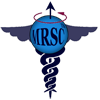Three decades following the clinical introduction of magnetic resonance imaging technology into diagnostic clinical patient care, the number of adverse events and safety incidents in the MR environment was continuing to grow at a rate faster than the rate of new MR imaging studies or units in the United States. A site wishing to perform clinical MR imaging examinations could accredit their organization or MR equipment by satisfying demonstrated quality assurance initiatives. No such process existed – or exists – for research MR installations. While some providers could credential their equipment and sites, the vast majority of MR imaging sites did not have any individual formally named to be responsible for ensuring that established MR safe practices were defined and adhered to in and around their MR imaging systems. Investigation as to why this might be the case revealed an interesting observation. The vast majority of those who operated MR systems, were responsible for the operation of MR systems, and those who interpreted MR imaging examinations did not themselves feel adequately educated in, or comfortable understanding, the underlying concepts that were associated with the various potential safety issues inherent to MR imaging environments and equipment. As a response to this perceived need, the two nearly simultaneous outgrowths of this observation were:
- The creation and establishment of formal courses and educational endeavors focused solely on appropriately educating those responsible for ensuring safety in the MR suite regarding the various potential safety issues associated with this unique environment and how to modify behaviors to increase safety; and
- The creation and establishment of the American Board of Magnetic Resonance Safety. By design, the Board was populated with individuals who represented both those who were charged with ensuring safety in the MR environment – physicians, technologists, and physicists – and those with special expertise in the various potential safety issues and topics associated with the MR imaging process. These included individuals with clinical, technical, and physics backgrounds.
In order to ensure that, to the degree practical and realistically feasible, international consensus was achieved on the activities and decisions of the ABMRS from its initiation, representation from various American and International societies and regulatory organizations were among those who were invited to populate the first ABMRS Board. Once its bylaws were adopted, the Board was able to focus on its primary mission objective: defining the knowledge base required for those charged with ensuring safety in the MR environment, creating tests to ensure that this knowledge base was sufficiently present, and credentialing those professionals who were able to demonstrate to the satisfaction of the ABMRS that they met these defined qualifications requisite for those in positions of responsibility and authority over MR site safety.
